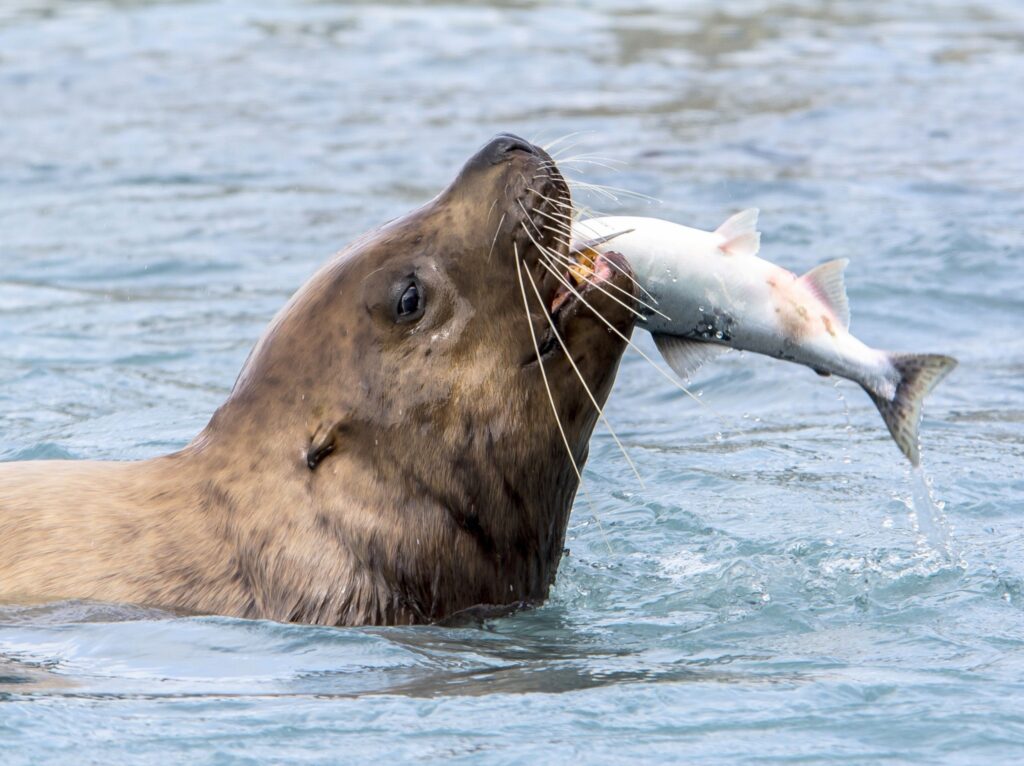
In 2014, an unprecedented marine heatwave struck the West Coast of the United States, causing the ocean to warm rapidly and remain unusually hot for an extended period. This environmental anomaly had devastating effects on marine life, leading to widespread starvation among seabirds and sea lions, with many sick and emaciated animals washing ashore. The disruption of the food web was evident, but scientists soon realized that the issue was not just about the quantity of food available but also its quality.
A team from UC San Diego, in collaboration with the Southwest Fisheries Science Center and UC Santa Cruz, investigated the root causes of starvation in predators like the California sea lion, which suffered significantly during the heatwave. Their research revealed a surprising variation in the nutritional value of anchovies, sardines, and squid, the primary food sources for sea lions. Despite being the same species and sometimes even the same size, these fish exhibited significant differences in energy content.
Nutritional Quality of Ocean Prey
Stephanie Nehasil, a postdoctoral researcher at Stony Brook University, highlighted the variability in energy provision among fish.
“You could have two fish side-by-side that are the same size but have a huge range of variation in the amount of energy they provide,”
she explained. This disparity means predators might need to consume tens of thousands of smaller, lower-quality fish to meet their energy needs, a task that is often impossible.
As the ocean warms and nutrient flows diminish, changes occur from the smallest plankton to larger fish, affecting the entire food chain. Energy density, a measure of how much energy prey animals hold, cannot be determined merely by size or weight, complicating the survival strategies of marine predators.
Measuring Energy Content in Fish
Nehasil and her team utilized a bomb calorimeter to measure the actual energy content in hundreds of fish samples. This device burns a small piece of tissue to calculate the heat it emits, which corresponds to its energy content. The team collected fish from various seasons, sizes, and regions, documenting the nutritional variations they found.
The findings were startling. Even within a single fish species, energy values could vary widely based on factors such as age, maturity, and habitat. This variability has significant implications for predators like the California sea lion, especially during heatwaves when female sea lions struggle to find food with sufficient energy to sustain themselves and their pups.
Implications for California Sea Lions
The 2014 heatwave led to high mortality rates among sea lion pups, raising concerns among scientists about whether the issue was purely about food availability or something more profound. Nehasil noted,
“We saw a lot of mortality, which led us to question whether prey abundance or availability had changed during the event.”
The research confirmed that while lower-quality prey was abundant, it could not sustain the sea lions, who required more food than was feasible to consume.
Reevaluating Bioenergetics Models
The study’s findings challenge the accuracy of existing bioenergetics models, which predict food requirements and ecosystem dynamics. Traditionally, these models assumed uniform energy value among same-sized fish, an assumption the study disproved. Professor Carolyn Kurle, a co-author of the study, emphasized the importance of this new data, stating,
“This is another piece of information to help inform our models to get a better understanding of how these ecosystems work, so we can recognize subtle dynamics that might otherwise be overlooked and respond more thoughtfully to environmental shifts.”
More precise data enhances decision-making for fisheries management, marine mammal protection, and policy development, which is crucial as climate change continues to pressure ecosystems.
Ocean Changes and Fish Energy
The 2014 ocean heatwave did more than raise temperatures; it disrupted the natural upwelling of cold, nutrient-rich water from the deep sea. This upwelling is vital for feeding plankton, which in turn nourishes small fish and larger predators. Without it, the entire food chain weakens, affecting fish energy density. Fish from nutrient-rich waters tend to grow larger and store more fat, providing more energy to predators. Conversely, fish from less productive regions are leaner and less beneficial.
Nehasil emphasized the importance of energy value in bioenergetics models to predict the impacts of climate and ocean changes.
“To help us predict what will happen as our climate and oceans change, we need this baseline ecosystem data, especially to understand prey dynamics and how predators are going to respond.”
Educational Impact and Future Research
Nehasil’s research also involved local students from San Diego through a partnership with the Ocean Discovery Institute, providing hands-on experience in measuring fish and understanding the connection between science and ocean health. Understanding the energy value of prey is crucial for interpreting the struggles of marine animals, revealing that the issue is not just about empty waters but also about empty calories.
Professor Kurle concluded,
“We all want to have healthy ecosystems, and there are many stakeholders who want these systems to succeed. We want everyone to have the best data possible to make important analyses and estimations.”
The full study has been published in the Journal of Animal Ecology, offering valuable insights for future research and conservation efforts.
—
Like what you read? Subscribe to our newsletter for engaging articles, exclusive content, and the latest updates. Check us out on EarthSnap, a free app brought to you by Eric Ralls and Earth.com.






